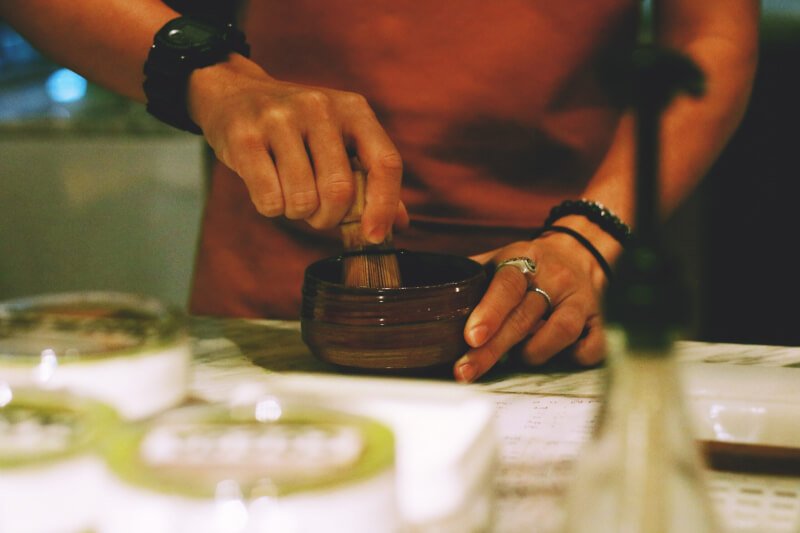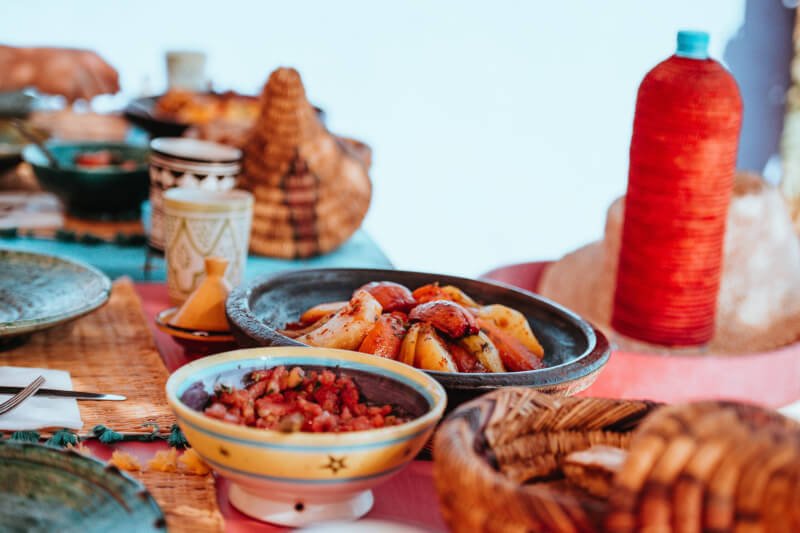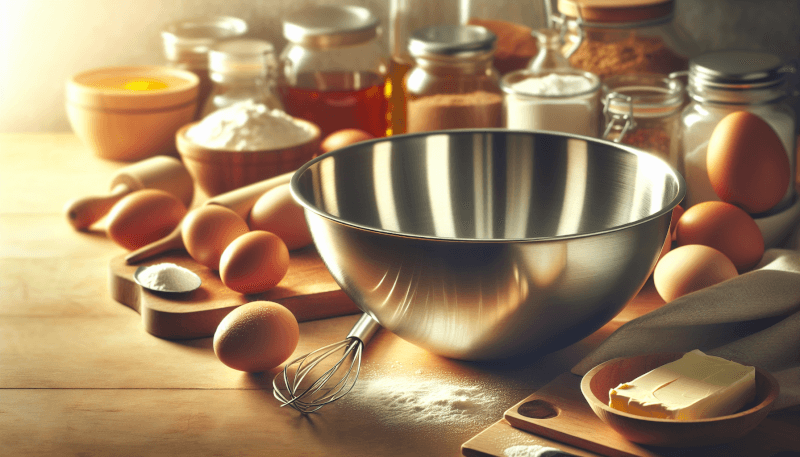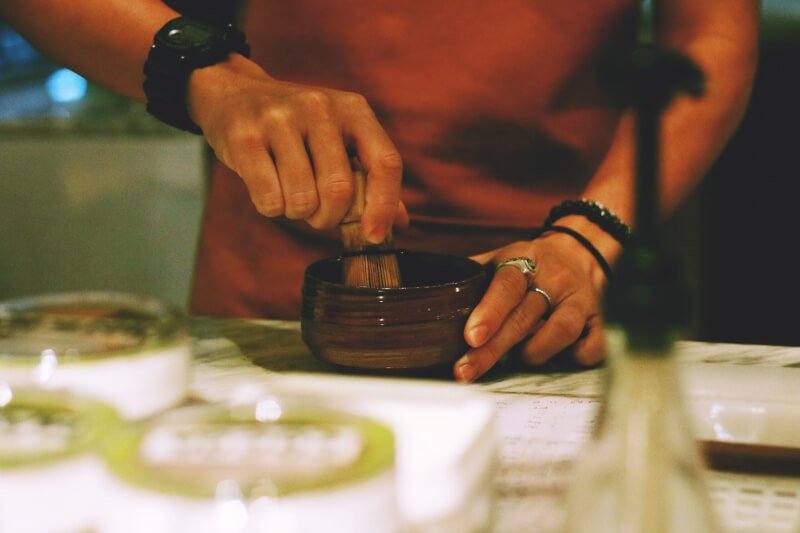Are you an avid home baker looking to upgrade your kitchen tools? Look no further! In this article, we will guide you through the process of choosing the best mixing bowls for your home baking needs. With numerous options available on the market, we understand that finding the right mixing bowls can be overwhelming. But fret not! We will break down the key factors to consider, from material and size to functionality and durability. By the end of this article, you’ll be equipped with the knowledge to select the perfect mixing bowls that will make your baking experience a breeze. So let’s get started!
Material
When it comes to choosing the best mixing bowls for home baking, the material is an important factor to consider. There are several options available, each with its own set of advantages and disadvantages.
Stainless Steel mixing bowls are a popular choice due to their durability and versatility. They are resistant to scratches and stains, making them a long-lasting option. Stainless steel bowls are also lightweight, making them easy to handle and maneuver while baking.
Glass mixing bowls are another great option, especially if you prefer a more visually appealing bowl. Glass bowls are transparent, allowing you to see the contents clearly. They are also microwave-safe and can even be used for serving or storing food. One thing to keep in mind is that glass bowls may break if dropped or exposed to extreme temperature changes.
Plastic mixing bowls are the most affordable option and are great for everyday baking needs. They are lightweight, making them easy to handle, and are available in a variety of colors. Plastic bowls are also dishwasher-safe, making cleanup a breeze. However, they may not have the same level of durability as other materials and can scratch easily.
Ceramic mixing bowls offer a beautiful and aesthetic appeal. They are versatile and can be used for baking as well as serving food. Ceramic bowls are generally microwave and oven-safe, but it’s important to check the specific guidelines for each bowl. Keep in mind that ceramic bowls tend to be heavier compared to other materials.
Silicone mixing bowls are a newer option in the market and are known for their flexibility and durability. They are lightweight, easy to handle, and can withstand high temperatures. Silicone bowls are also non-stick, making them ideal for mixing sticky ingredients. However, they may not provide the same level of stability as bowls made from other materials.
Copper mixing bowls are a premium option that offers both functionality and style. Copper bowls have excellent heat conductivity, making them ideal for tasks such as beating egg whites or creating delicate mixtures. They also have a timeless and elegant look, making them a great addition to any kitchen. However, copper bowls require regular maintenance and may be pricier compared to other options.
Consider your personal preferences and baking needs when deciding which material is best for you.
Size
The size of your mixing bowls is another important consideration. Different baking recipes require different quantities of ingredients, so it’s essential to have a range of sizes to choose from.
Small mixing bowls are perfect for tasks that require minimal amounts of ingredients or for whisking eggs. They are also great for storing small portions of leftovers.
Medium mixing bowls are the most versatile option and are suitable for a wide range of baking tasks. They can comfortably accommodate a moderate amount of ingredients while still providing enough room for mixing and stirring.
Large mixing bowls are ideal for recipes that require large quantities of ingredients, such as making dough or mixing batters for a cake. They offer ample space for thorough mixing and make it easier to combine all the ingredients evenly.
Nested mixing bowls are sets of bowls that come in a variety of sizes, typically ranging from small to large. These sets are perfect for those who want a range of sizes without taking up too much storage space. The nested design allows the bowls to fit into each other, saving valuable cabinet space.
Consider your baking needs and the quantities of ingredients you typically work with when choosing the size of your mixing bowls.

Shape
The shape of your mixing bowls can also impact your baking experience. Different shapes have different advantages and are suitable for various tasks.
Standard round bowls are the most common shape available and are versatile for a wide range of baking tasks. They provide even mixing and are ideal for whisking, stirring, and beating ingredients.
Wide bottom bowls are great for tasks that require a lot of mixing or when you need ample space to toss and mix ingredients together. The wider surface area at the bottom of the bowl provides stability and makes it easier to handle.
Tapered bowls have a narrower top than bottom, making them suitable for tasks that involve pouring or transferring ingredients. These bowls are often used for tasks such as whisking eggs or pouring batter into baking pans.
Sloping side bowls have slightly angled sides, making it easier to fold ingredients together without creating too much air. They are often used for delicate mixtures or when incorporating dry ingredients into wet ones.
Lipped edge bowls have an extended lip around the rim, allowing for easy pouring and preventing spills. These bowls are perfect for tasks that involve transferring liquids or batters.
Consider the specific tasks you frequently undertake while baking and choose a shape that best suits your needs.
Weight
The weight of your mixing bowls can greatly impact your baking experience. It’s important to consider the weight of the bowls, especially if you plan to handle them for extended periods or if you have any physical limitations.
Lightweight bowls are easy to handle and maneuver. They are ideal for tasks that require frequent lifting and pouring, particularly if you have limited strength or mobility.
Heavyweight bowls provide stability and are less likely to move or tip over while mixing. They are great for tasks that require vigorous mixing or where stability is crucial, such as kneading dough.
Balanced weight bowls strike a middle ground between lightweight and heavyweight bowls. They provide stability while still being manageable to handle. Balanced weight bowls are suitable for most baking tasks and offer the best of both worlds.
Consider your own strength and preferences when choosing the weight of your mixing bowls.

Durability
Durability is an important factor when choosing mixing bowls, as you want them to withstand regular use and last for a long time. Consider the following options for durable mixing bowls:
Scratch-Resistant Bowls: Look for mixing bowls that are made from materials that are resistant to scratches, as this will help them maintain their aesthetic appeal and functionality over time. Stainless steel and silicone bowls are known for their scratch resistance.
Chip-Resistant Bowls: Mixing bowls that are chip-resistant will be less likely to break or chip along the edges. Ceramic and glass bowls, in general, have a higher risk of chipping, so it’s important to choose bowls that are specifically designed to be chip-resistant.
Break-Resistant Bowls: For added durability, opt for break-resistant bowls, especially if you have a tendency to accidentally drop or knock over your bowls. Plastic and silicone bowls are known for their break-resistant qualities.
Considering the durability of your mixing bowls will ensure that they can withstand regular use in the kitchen and provide value for your investment.
Heat Resistance
When it comes to baking, heat resistance is an important factor to consider. Certain tasks, such as melting ingredients or using hot water, require mixing bowls that can withstand high temperatures. Consider the following options:
High Heat Resistance: Look for mixing bowls that are specifically labeled as high heat resistant. This means that they can withstand high temperatures without warping or melting, and you can safely use them for tasks such as pouring hot liquids or melting chocolate. Stainless steel, glass, and certain types of plastic bowls are known for their high heat resistance.
Oven-Safe Bowls: If you plan to use your mixing bowls for baking in the oven, make sure to choose bowls that are oven-safe. Glass and ceramic bowls are typically oven-safe, but it’s important to check the specific guidelines for each bowl. Oven-safe bowls allow you to easily transfer mixtures from the bowl to the oven without having to switch containers.
Microwave-Safe Bowls: If you frequently use your microwave for baking or cooking, having microwave-safe mixing bowls is a great convenience. Glass, ceramic, and certain types of plastic bowls are microwave-safe and allow for easy and efficient heating or reheating of ingredients.
Freezer-Safe Bowls: For certain recipes, it may be necessary to chill or freeze the ingredients. Freezer-safe mixing bowls allow you to easily store mixtures in the freezer without worrying about the bowls cracking or becoming damaged. Glass and certain types of plastic bowls are typically freezer-safe.
Consider the specific heating requirements of your baking tasks and choose mixing bowls that can safely withstand those temperatures.

Ease of Cleaning
Cleaning up after baking is an inevitable part of the process, so having mixing bowls that are easy to clean can save you time and effort. Consider the following options:
Dishwasher-Safe Bowls: If you prefer the convenience of a dishwasher, look for mixing bowls that are labeled as dishwasher-safe. Stainless steel, glass, and certain types of plastic bowls are generally safe to clean in the dishwasher. Dishwasher-safe bowls can be easily placed in the dishwasher, saving you time and effort in hand-washing.
Hand-Wash Only Bowls: Some mixing bowls may require hand-washing to maintain their quality and durability. Ceramic and copper bowls, for example, often need to be hand-washed to prevent damage or discoloration. Hand-wash only bowls may require more effort, but their unique qualities may make them worth the extra care.
Non-Stick Bowls: Mixing bowls with a non-stick coating make cleaning a breeze. With a non-stick surface, the mixture is less likely to stick to the sides of the bowl, making it easier to remove and clean. Non-stick bowls are great for tasks that involve sticky ingredients or for recipes that require thorough mixing.
Consider your personal preferences and cleaning routine when choosing mixing bowls that are easy to clean and maintain.
Stackability
If storage space is a concern in your kitchen, stackable mixing bowls can be a great solution. Stackable bowls allow you to save cabinet or countertop space by neatly nesting the bowls inside each other. Consider the following options:
Stackable Bowls: These bowls are specifically designed to fit inside each other, creating a compact and organized storage solution. Often made from materials like plastic or stainless steel, stackable bowls are a practical choice for those with limited storage space.
Nested Bowls: Nested mixing bowl sets typically come in a variety of sizes and can be stacked together, similar to stackable bowls. Nested sets offer the flexibility of having various bowl sizes while taking up minimal storage space. Look for sets that have a range of sizes to suit your baking needs.
Having stackable or nested mixing bowls can help declutter your kitchen and make it easier to access the bowls you need when baking.

Grip and Stability
Having mixing bowls that provide a good grip and stability is essential to ensure a smooth and safe baking experience. Consider the following options:
Non-Slip Base Bowls: Mixing bowls with a non-slip base are designed to stay securely in place while you mix. The non-slip base provides stability and prevents the bowl from sliding or tipping over, even during vigorous mixing. Look for bowls with a rubber or silicone base for optimal grip.
Wide and Stable Base Bowls: Mixing bowls with a wide and stable base offer increased stability and balance. The wider base provides a solid foundation, making it easier to mix and stir ingredients without the bowl tipping over.
Textured Exterior Bowls: Some mixing bowls have a textured exterior that provides a better grip when handling. The textured surface reduces the chances of the bowl slipping out of your hands, especially when dealing with wet or greasy ingredients.
Consider your personal preference and the level of control and stability you require when choosing mixing bowls with a good grip and stability.
Price
Finally, consider your budget when selecting mixing bowls for your home baking needs. Mixing bowls are available at various price points, so it’s important to find a balance between quality and affordability.
Consider Your Budget: Determine how much you are willing to spend on mixing bowls. This will help you narrow down your options and find the best bowls within your price range. Keep in mind that investing in higher-quality bowls may offer more durability and longevity.
Value for Money Bowls: Look for mixing bowls that offer good value for your money. Consider the features, quality, and durability of the bowls in relation to their price. Compare different brands and read reviews to ensure you are getting the best value for your budget.
Remember that mixing bowls are a long-term investment, and choosing high-quality bowls that fit your budget can greatly enhance your baking experience.
In conclusion, choosing the best mixing bowls for home baking involves considering factors such as the material, size, shape, weight, durability, heat resistance, ease of cleaning, stackability, grip and stability, and price. By evaluating your baking needs and preferences, you can select mixing bowls that are functional, durable, and enjoyable to use. Happy baking!



